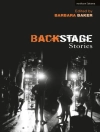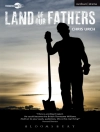The fandango, emerging in the early-eighteenth century Black Atlantic as a dance and music craze across Spain and the Americas, came to comprise genres as diverse as Mexican son jarocho, the salon and concert fandangos of Mozart and Scarlatti, and the Andalusian fandangos central to flamenco. From the celebrations of humble folk to the theaters of the European elite, with boisterous castanets, strumming strings, flirtatious sensuality, and dexterous footwork, the fandango became a conduit for the syncretism of music, dance, and people of diverse Spanish, Afro-Latin, Gitano, and even Amerindian origins. Once a symbol of Spanish Empire, it came to signify freedom of movement and of expression, given powerful new voice in the twenty-first century by Mexican immigrant communities. What is the full array of the fandango? The superb essays gathered in this collection lay the foundational stone for further exploration.
K. Meira Goldberg & Antoni PizA
Global Reach of the Fandango in Music, Song and Dance [PDF ebook]
Spaniards, Indians, Africans and Gypsies
Global Reach of the Fandango in Music, Song and Dance [PDF ebook]
Spaniards, Indians, Africans and Gypsies
Cumpărați această carte electronică și primiți încă 1 GRATUIT!
Format PDF ● Pagini 735 ● ISBN 9781443870610 ● Editor K. Meira Goldberg & Antoni PizA ● Editura Cambridge Scholars Publishing ● Publicat 2017 ● Descărcabil 3 ori ● Valută EUR ● ID 5041381 ● Protecție împotriva copiilor Adobe DRM
Necesită un cititor de ebook capabil de DRM












